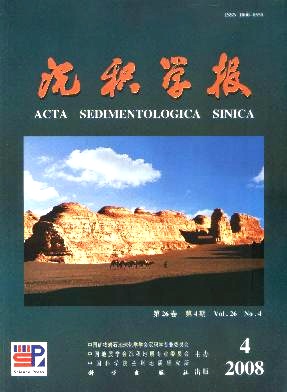北京延庆千沟中元古代高于庄组第三段:一个典型的前寒武纪非叠层石碳酸盐岩沉积序列
- Received Date: 1900-01-01
- Rev Recd Date: 1900-01-01
- Publish Date: 2008-08-10
-
Key words:
- non-stromatolitic carbonate succession /
- Gaoyuzhuang Formation /
- Mesoproterozoic /
- Qiangou section in Yanqing
Abstract: In the long Precambrian, the stromatolitic carbonate succession is very common. But, the nonstromatolitic carbonate succession that is marked by the subtidal deposits forms a strong contrast to the stromatolitic carbonate succession. Both the nonstromatolitic and the stromatolitic carbonate successions are important clues for the further understanding of the evolving carbonate world of the Precambrian. The Mesoproterozoic Gaoyuzhuang Fm. in Yanshan Area is a set of more than 1000mthick carbonate strata that can be divided into four Members (or Subformations): The first Member (or the Guandi Subformation) is marked by a set of stromatolitic dolomites overlying a set of transgressive sandstones; The second Member (or the Sangshuan Subformation) is a set of manganiferous dolomites with a few stromatolites; The third Member is chiefly made up of limestones and is characterized by a particularly nonstromatolitic carbonate succession of the Precambrian; The fourth Member (or the Huanxiusi Subformation) is composed of a set of dolomites of stromatolitic reefs or lithoherms. The nonstromatolitic carbonate succession making up the third Member of the Gaoyuzhuang Formation at the Qiangou section in Yanqing County of Beijing can further be subdivided into three thirdorder sequences that are marked by the regular succession of sedimentary facies. In thirdorder sequences, lots of subtidal carbonate meterscale cycles made up of the midiumbedded leiolite limestones and the thinbedded marls constitute their transgressive system tracts (TSTs) and the early highstand system tracts (EHSTs), lots of meterscale cycles made up by the thinbedded limestones and marls constitute their condensed sections (CSs), and thickbedded to massive dolimitic limestones or lime dolomites make up the late highstand system tracts (LHSTs). The time scan of the Gaoyuzhuang Formation is deduced as 200 Ma (from 1600 Ma to 1400 Ma). An obvious hiatus between the Gaoyuzhuang Formation and the underlying Dahongyu Formation is deduced as 50 Ma to 100 Ma, so the forming duration of the Gaoyuzhuang Formation is thought as the 100 Ma (1 500 Ma to 1 400 Ma). Furthermore, the subface of the third Member of the Gaoyuzhuang Formation that is just on the mid position of the Gaoyuzhuang Formation and its forming age may be deduced as about 1 450 Ma. According to these materials, the nonstromatolitic sedimentary succession make up the third Member of the Gaoyuzhuang Formation may demonstrates a stromatolite decline event occurring at ca. 1 450 Ma of the Proterozoic besides other three events that respectively occurred at ca. 2 000 Ma, ca. 1 000 Ma and ca. 675 Ma. The forming duration of this nonstromatolitic sedimentary succession of the third Member of the Gaoyuzhuang Formation can be generally correlative that of a similar sedimentary succession in North America, i.e. a nonstromatolitic sedimentary succession of the Helena Formation of the Belt Supergroup, which suggests that the stromatolite decline occurring at ca. 1 450 Ma is a global event. All of these information’s endow the nonstromatolitic sedimentary succession making up the third Member of the Gaoyuzhuang Formation at the Qiangou section with important significance. The particularly nonstromatolitic carbonate succession make up the third Member of the Mesoproterozoic Gaoyuzhuang Formation at the Qiangou section might be the representative of the nonstromatolitic carbonate succession of the Precambrian because of its special lithological features and particular sedimentary structures, whose general sedimentary features are helpful and meaningful for the further understanding of changing regularities of the sophisticate and evolving carbonate world of the Precambrian.






 DownLoad:
DownLoad: